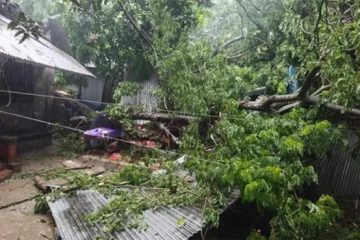Most of 250 official websites mock PM’s vision for change
 While the government dreams of a “Digital Bangladesh” by 2021, most of the 250 official websites sampled in recent weeks contained outdated information, dead links and “web page under construction” signs.
While the government dreams of a “Digital Bangladesh” by 2021, most of the 250 official websites sampled in recent weeks contained outdated information, dead links and “web page under construction” signs.
The sports ministry website, for instance, features the “current news” about a triumphant return of the Bangladesh cricket team from a World Cup tour–three years ago.
The websites for the power ministry’s Energy and Mineral Resources Division, as well as for the religious affairs ministry, had several cyber potholes and “under construction” signs.
The industries ministry website gives the news of Dilip Barua being sworn in as the new minister last January, 2009, as its current news. The most recent information on the site is the “daily stock position of Urea fertiliser”, which is two months old.
A number of anti-virus software also warned of possible malware when accessing some government websites.
Experts say that government websites, launched 10 years ago as part of the e-governance initiative, were intended to make it easier for citizens to interact with public agencies. It meant no longer wait in queues in government offices to make complaints, pay bills or apply for special programmes.
Instead, the websites are merely Windows dressing, say experts.
“Most of the websites are there just to be there,” said Mustafa Jabbar, president of Bangladesh Computer Samity, a national coalition of technology-based organisations. “They do not do anything to help the people or organisations.”
He said most sites simply list the names of department officials, messages from directors and historical information that sometimes requires scrolling through numerous screens.
In January, Badda resident Ali Akbar heard that anyone could download textbooks from the National Curriculum and Text Board website. He decided to download and print some out for his eight-year-old housemaid Khuku.
“I went to the website to download the books and the page was not there,” he said, adding, “I kept checking back for the next three days and still found it not working. It got me frustrated so I gave in, and pretty much forgot about the whole thing later.”
A 2010 United Nations survey showed Bangladesh had improved its e-government but still ranked 134 out of 184 countries. That was above Pakistan, but below the Maldives, Sri Lanka and India. The ranking was based on criteria such as the presence of web pages, information on public policy and whether citizens could give immediate feedback.
Government officials admit their websites are unattractive, clunky and a flop among citizens. They blame the lack of techno-savvy people to look after the websites, which require at least half an hour a day to update and maintain. So the task falls to administrators who work on the home pages in addition to their official duties.
The result is that many websites are lagging behind. When the nation was on a swine flu alert last August, a review showed the websites for the health ministry and other government offices carried nothing on the scare.
Even for more mundane matters–paying taxes or making an appointment to get a car fitness certificate–government websites fall far short, say experts. The portals for the 64 districts launched in January are not interactive, and mostly contain a collection of barebones information.
Citizens using the otherwise well-designed sites for the National Board of Revenue (NBR) or Bangladesh Road Transport Authority (BRTA) still face analogue procedures. They have to download applications, print them, fill them out by hand and then bring them into the respective offices.
Many of the websites are also not available in Bangla, making them nearly useless to the bulk of the population.
“The government needs to realise when they are providing content for the general people,” said Jabbar, adding, “They need to do it in the language of the general people. They need to post contents for 150 million people, not just the five or six lakh who use Internet.”
But even the five or six lakh regular Internet surfers may find the cyber waves to be choppy. The website of the Ministry of Chittagong Hills Tracts Affairs, for one, has been dead for some time now. Ministry officials had no clue until The Daily Star enquired about it on Thursday.
As of Sunday, the page remained blank except for a line of computer code.
Experts say fishing out information through the maze of ministries needs to be made easier. The information provided on the websites lack consistency and the pages of most ministries are not linked to each other. They say the websites should reflect a common theme, present uniform information and be connected.
The visuals are also alarming in many websites with multi-coloured, gaudy fonts blinking and winking at different speeds, said Amin Mahmud, a freelance web developer. He jokingly suggested that users put on a pair of goggles before visiting some of the home pages.
“I recall once an animation on a government site read, ‘Let your eyes live on. Donate your eyes to someone’.”
“The message moved so quickly from right to left, I thought I was going to need a fresh pair of eyes,” he said.




















